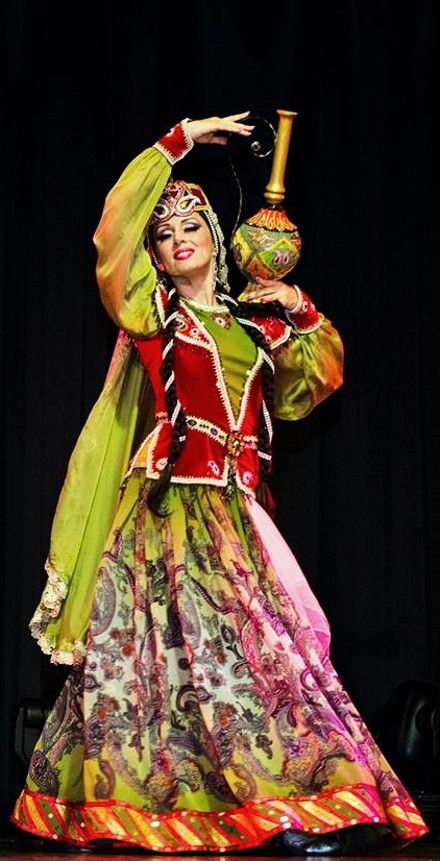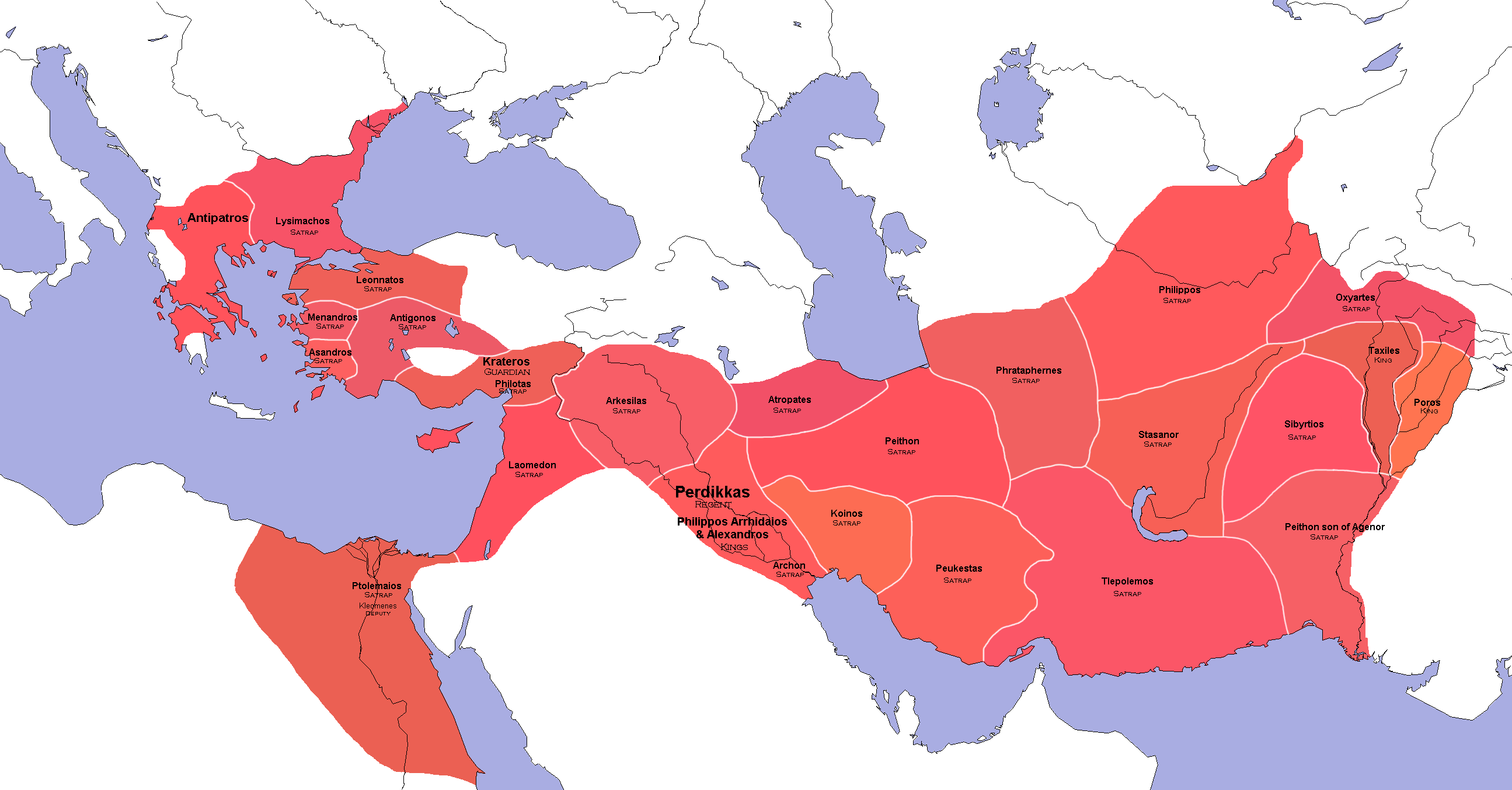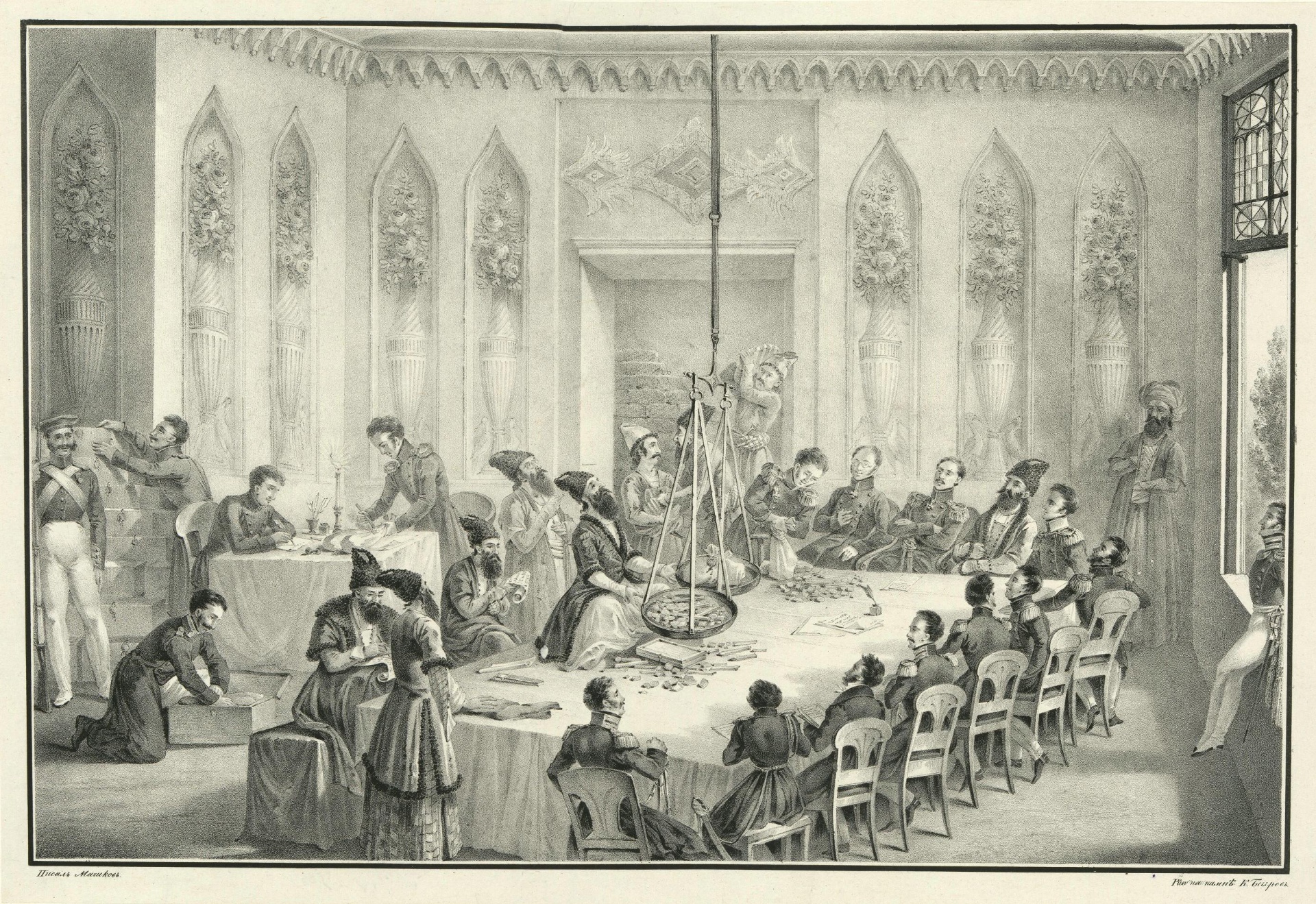|
Azerbaijani People
Azerbaijanis (; , ), Azeris (, ), or Azerbaijani Turks (, ) are a Turkic ethnic group living mainly in the Azerbaijan region of northwestern Iran and the Republic of Azerbaijan. They are predominantly Shia Muslims. They comprise the largest ethnic group in the Republic of Azerbaijan and the second-largest ethnic group in neighboring Iran and Georgia. They speak the Azerbaijani language, belonging to the Oghuz branch of the Turkic languages. Following the Russo-Persian Wars of 1813 and 1828, the territories of Qajar Iran in the Caucasus were ceded to the Russian Empire and the treaties of Gulistan in 1813 and Turkmenchay in 1828 finalized the borders between Russia and Iran. After more than 80 years of being under the Russian Empire in the Caucasus, the Azerbaijan Democratic Republic was established in 1918 which defined the territory of the Republic of Azerbaijan. Etymology Azerbaijan is believed to be named after '' Atropates'', a Persian satrap (governor) who ruled in ... [...More Info...] [...Related Items...] OR: [Wikipedia] [Google] [Baidu] |
Azerbaijani Traditional Clothing
Azerbaijani traditional clothing () is the traditional attire of the Azerbaijani people. It is closely connected to its history, religious culture and national identity. Costumes and dresses are of great importance in Azerbaijani culture. Azerbaijani style is visible in ornaments of costumes with artistic embroideries in weaving and knitting. In the 17th century, the territory of modern Azerbaijan was of great importance to the silk industry. Silks were produced in the cities Shamakhi, Basqal, Ganja, Shaki, Shusha, and others. The style of clothes and their colours reflects their wearers' marital status, wealth, and other information. Men's wear Outerwear National outerwear for men consists of a (shirt) or , Arkhalig, , '' Chukha'' and ''Kurk''. * '' Arkhalig'' – a long, tight, waist-jacket made of fabrics including silk, satin, cloth, cashmere and velvet, depending on the social status of its owner. * ''Gaba'' – male humeral outerwear, which is made from tirma, an e ... [...More Info...] [...Related Items...] OR: [Wikipedia] [Google] [Baidu] |
Oghuz Languages
The Oghuz languages are a sub-branch of the Turkic language family, spoken by approximately 108 million people. The three languages with the largest number of speakers are Turkish, Azerbaijani and Turkmen, which, combined, account for more than 95% of speakers of this sub-branch. Kara-Khanid scholar Mahmud al-Kashgari, who lived in the 11th century, stated that the Oghuz language was the simplest among all Turkic languages. Swedish turcologist and linguist Lars Johanson notes that Oghuz languages form a clearly discernible and closely related bloc within the Turkic language family as the cultural and political history of the speakers of Oghuz languages has linked them more closely up to the modern age. Western Oghuz languages are highly mutually intelligible with each other and the Crimean Tatar language, which, though genetically Kipchak Turkic rather than Oghuz, has been heavily influenced by Turkish over several centuries. History and terminology The ancestor of O ... [...More Info...] [...Related Items...] OR: [Wikipedia] [Google] [Baidu] |
Atropatene
Atropatene (; ; ), also known as Media Atropatene, was an ancient Iranian peoples, Iranian kingdom established in by the Persian satrap Atropates (). The kingdom, centered in present-day Azerbaijan (Iran), Azerbaijan region in northwestern Iran, was ruled by Atropates' descendants until the early 1st-century AD, when the Parthian Arsacid dynasty supplanted them. It was conquered by the Sasanians in 226, and turned into a province governed by a ''marzban'' ("margrave"). Atropatene was the only Iranian region to remain under Zoroastrian authority from the Achaemenids to the Muslim conquest of Persia, Arab conquest without interruption, aside from being briefly ruled by the Macedonia (ancient kingdom), Macedonian king Alexander the Great (). The Old Persian name Ātṛpātakāna is the direct ancestor of the name of the historic Azerbaijan (Iran), Azerbaijan region in Iran. Name According to Strabo, the name of Atropatene derived from the name of Atropates, the commander of the ... [...More Info...] [...Related Items...] OR: [Wikipedia] [Google] [Baidu] |
Satrap
A satrap () was a governor of the provinces of the ancient Median kingdom, Median and Achaemenid Empire, Persian (Achaemenid) Empires and in several of their successors, such as in the Sasanian Empire and the Hellenistic period, Hellenistic empires. A satrapy is the territory governed by a satrap. A satrap served as a viceroy to the king, though with considerable autonomy. The word came to suggest tyranny or ostentatious splendour, and its modern usage is a pejorative and refers to any subordinate or local ruler, usually with unfavourable connotations of corruption. Etymology The word is derived via Latin from Ancient Greek, Greek (), itself borrowed from an Old Iranian languages, Old Iranian . In Old Persian, which was the native language of the Achaemenids, it is recorded as (, literally "protector of the province"). The Median language, Median form is reconstructed as . Its Sanskrit cognate is (). The Biblical Hebrew form is , as found in Esther 3:12. In the Parthian l ... [...More Info...] [...Related Items...] OR: [Wikipedia] [Google] [Baidu] |
Persian People
Persians ( ), or the Persian people (), are an Iranian peoples, Iranian ethnic group from West Asia that came from an earlier group called the Proto-Iranians, which likely split from the Indo-Iranians in 1800 BCE from either Afghanistan or Central Asia. They are indigenous to the Iranian plateau and comprise the majority of the population of Iran.Iran Census Results 2016 United Nations Alongside having a Culture of Iran, common cultural system, they are native speakers of the Persian language and of the Western Iranian languages that are closely related to it. In the Western world, "Persian" was largely understood as a demonym for all Iranians rather than as an ethnonym for the Persian people, but this understanding Name of Iran, shi ... [...More Info...] [...Related Items...] OR: [Wikipedia] [Google] [Baidu] |
Atropates
Atropates ( and Middle Persian ; ; – after 321 BC) was a Persian nobleman who served Darius III, then Alexander the Great, and eventually founded an independent kingdom and dynasty that was named after him. Diodorus (18.4) refers to him as (), while Quintus Curtius (8.3.17) erroneously names him 'Arsaces'. Biography Towards the end of the Achaemenid Empire, Atropates was governor (''satrap'') of the Achaemenid province of Media. He was close to the royal family, and was possibly of Achaemenid descent himself. In the decisive Battle of Gaugamela (October 331 BCE) between Darius and Alexander, Atropates commanded the Achaemenid troops of Media and Sacasene. Following his defeat in that battle, Darius fled to the Median capital of Ecbatana, where Atropates gave him hospitality. Darius attempted to raise a new army but was forced to flee Ecbatana in June 330 BCE. After Darius' death a month later at the hands of Bessus, Atropates surrendered to Alexander. Alexander initia ... [...More Info...] [...Related Items...] OR: [Wikipedia] [Google] [Baidu] |
Azerbaijan Democratic Republic
The Azerbaijan Democratic Republic (), also known as the Azerbaijan People's Republic (; ), was the first secular democracy, democratic republic in the Turkic peoples, Turkic and Muslim worlds. *Tadeusz Swietochowski. ''Russia and Azerbaijan: A Borderland in Transition''. Columbia University Press, 1995. , . * Reinhard Schulze. ''A Modern History of the Islamic World''. I.B.Tauris, 2000. , . Citations are at Talk:Azerbaijan Democratic Republic#First or second The ADR was founded by the Azerbaijani National Council in Tbilisi, Tiflis on 28 May 1918 after the collapse of the Transcaucasian Democratic Federative Republic, and ceased to exist on April 28, 1920. Its established borders were with Russian Soviet Federative Socialist Republic, Russia to the north, the Democratic Republic of Georgia to the north-west, the First Republic of Armenia, Republic of Armenia to the west, and Qajar Iran, Iran to the south. It had a population of around 3 million. Ganja, Azerbaijan, Ganja was the ... [...More Info...] [...Related Items...] OR: [Wikipedia] [Google] [Baidu] |
Treaty Of Turkmenchay
The Treaty of Turkmenchay (; ) was an agreement between Qajar Iran and the Russian Empire, which concluded the Russo-Persian War (1826–1828). It was second of the series of treaties (the first was the 1813 Treaty of Gulistan and the last, the 1881 Treaty of Akhal) signed between Qajar Iran and Imperial Russia that forced Iran to cede or recognize Russian influence over the territories that formerly were part of Iran. The treaty was signed on 22 February 1828 (5 Sha'ban 1243) in Torkamanchay (a village between Tabriz and Tehran). It made Iran cede the control of several areas in the South Caucasus to Russia: the Erivan Khanate, the Nakhchivan Khanate and the remainder of the Talysh Khanate. The boundary between Russia and Iran was set at the Aras River. These territories are now Armenia, the south of the Republic of Azerbaijan, Nakhchivan and Iğdır Province (now part of Turkey). The treaty was signed for Iran by the Crown Prince Abbas Mirza and Allah-Yar Khan Asef ... [...More Info...] [...Related Items...] OR: [Wikipedia] [Google] [Baidu] |
Treaty Of Gulistan
The Treaty of Gulistan (also spelled Golestan: ; ) was a peace treaty concluded between the Russian Empire and Qajar Iran on 24 October 1813 in the village of Gülüstan, Goranboy, Gulistan (now in Goranboy District, the Goranboy District of Azerbaijan) as a result of the Russo-Persian War (1804–1813), first full-scale Russo-Persian War (1804 to 1813). The peace negotiations were precipitated by the successful Siege of Lankaran, storming of Lankaran by General Pyotr Kotlyarevsky on 1 January 1813. It was the first of a series of treaties (the last being the Akhal Treaty) signed between Qajar Iran and Imperial Russia that forced Persia to cede the territories that formerly were Greater Iran, part of Iran. The treaty confirmed the ceding and inclusion of what is now Dagestan, eastern Georgia (country), Georgia, most of the Azerbaijan, Republic of Azerbaijan, and parts of northern Armenia from Iran into the Russian Empire. The text was prepared by the British diplomat Sir Gore Ouse ... [...More Info...] [...Related Items...] OR: [Wikipedia] [Google] [Baidu] |
Russian Empire
The Russian Empire was an empire that spanned most of northern Eurasia from its establishment in November 1721 until the proclamation of the Russian Republic in September 1917. At its height in the late 19th century, it covered about , roughly one-sixth of the world's landmass, making it the list of largest empires, third-largest empire in history, behind only the British Empire, British and Mongol Empire, Mongol empires. It also Russian colonization of North America, colonized Alaska between 1799 and 1867. The empire's 1897 census, the only one it conducted, found a population of 125.6 million with considerable ethnic, linguistic, religious, and socioeconomic diversity. From the 10th to 17th centuries, the Russians had been ruled by a noble class known as the boyars, above whom was the tsar, an absolute monarch. The groundwork of the Russian Empire was laid by Ivan III (), who greatly expanded his domain, established a centralized Russian national state, and secured inde ... [...More Info...] [...Related Items...] OR: [Wikipedia] [Google] [Baidu] |
Qajar Iran
The Guarded Domains of Iran, alternatively the Sublime State of Iran and commonly called Qajar Iran, Qajar Persia or the Qajar Empire, was the Iranian state under the rule of the Qajar dynasty, which was of Turkic peoples, Turkic origin,Cyrus Ghani. ''Iran and the Rise of the Reza Shah: From Qajar Collapse to Pahlavi Power'', I. B. Tauris, 2000, , p. 1William Bayne Fisher. ''Cambridge History of Iran'', Cambridge University Press, 1993, p. 344, Dr Parviz Kambin, ''A History of the Iranian Plateau: Rise and Fall of an Empire'', Universe, 2011, p.36online edition specifically from the Qajar (tribe), Qajar tribe, from 1789 to 1925. The Qajar family played a pivotal role in the Unification of Iran (1779–1796), deposing Lotf 'Ali Khan, the last Shah of the Zand dynasty, and re-asserted Iranian sovereignty over large parts of the Caucasus. In 1796, Agha Mohammad Khan Qajar seized Mashhad with ease, putting an end to the Afsharid dynasty. He was formally crowned as Shah after his Batt ... [...More Info...] [...Related Items...] OR: [Wikipedia] [Google] [Baidu] |
Russo-Persian War (1826–1828)
The Russo-Persian War of 1826–1828 was the last major military conflict between the Russian Empire and Qajar Iran, which was fought over territorial disputes in the South Caucasus region. Initiated by Russian expansionist aims and intensified by Iranian resistance, the war witnessed significant military engagements, including the Battle of Ganja and Capture of Erivan. The Iranians were initially successful, catching the Russian forces of Yermolov off-guard. They were aided by local uprisings against Russian garrisons in Talish, Ganja, Shirvan, Shakki, and other areas. However Russian reinforcements under the newly appointed General Ivan Paskevich turned the war decisively in Russia's favor, capturing the important city of Tabriz in northwestern Iran. The war concluded with the Treaty of Turkmenchay in 1828, which stripped Iran of its last remaining territories north of Aras river in the Caucasus, which comprised all of modern Armenia, the Nakhchivan Autonomous Republi ... [...More Info...] [...Related Items...] OR: [Wikipedia] [Google] [Baidu] |







